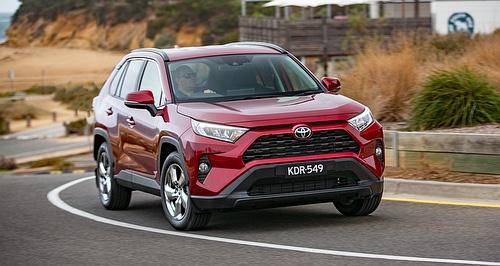News - Market Insight - Market Insight 2024Market Insight: Fleets up, private sales downNew-vehicle sales to fleets, private buyers converging per Pitcher Partners forecast13 May 2024 THE gap between new-vehicle sales to Australian private and fleet buyers was closer in April 2024 than it was at the end of the last financial year, which could be the first sign that supply backlogs for more profitable retail customers are clearing and a refresh of company, government and rental vehicles is now underway.
A recent analysis by the Motor Industry Services unit of Pitcher Partners forecasts another record sales year for Australia’s new-vehicle market, with as many as 1.25 million deliveries potentially trumping 2023’s benchmark 1.2 million, on the back of fleets catching up on deliveries lost during and following the COVID-19 pandemic while economic factors put pressure on private buyers.
There was a blip in December last year where fleet sales overtook those to private buyers as business and rental customers took delivery ahead of the summer holidays while retail customers were enjoying the vehicles they already owned.
After deliveries favoured private buyers once again in January, the trend toward convergence that began at the start of this financial year has re-emerged.
Pitcher Partners analysts report that order banks peaked last year but that they will “still be strong in 2024”.
“However, with macroeconomic issues looming, increased interest rates and cost-of-living pressures, the deliveries will flow towards fleets (government, rental and business) and retail sales will slow or drop in 2024.”
The total Australian new-vehicle market is up 14.4 per cent to the end of April, with sales to businesses up 18.9 per cent and governments up 32.7 per cent while private buyers are slightly behind the pace of the broader market (up 12 per cent), as are rental firms (up 10.2 per cent).
Private buyers averaged 53.8 per cent of the market between April 2023 – when it was 55.8 per cent – and last month when penetration was below average at 52.7 per cent.
During the same period, total fleet sales averaged 46.2 per cent penetration, increasing from 44.2 per cent in April 2023 to an above-average 47.3 per cent last month.
A crossover occurred in December when private sales accounted for 49.1 per cent of the market and fleets made up the other 50.9 per cent on the back of increased deliveries to business and government customers.
Government fleets take the smallest slice of the overall pie, averaging just over three per cent of all new-vehicle volume in Australia during the past 12 months but this penetration has grown from 2.9 per cent in April 2023 to 3.4 per cent in April 2024. Government sales peaked in December at 3.6 per cent.
Rental fleets averaged double the volume of governments at six per cent over the past year, peaking in November at 7.32 per cent in preparation for the summer holiday season. Compared with April last year when rental fleets represented 5.6 per cent of all Australian new-vehicle sales, they were 5.3 per cent in April 2024.
Like governments, peak business deliveries in the past year were in December to account for 40.5 per cent of the Australian market compared with an average of 37.2 per cent, which it was above in April this year at 38.7 per cent compared with 35.7 per cent a year earlier.
During the April-April analysis period, private, business, and rental buyers favoured SUVs, while it was a close-run thing between SUVs and light commercial vehicles (LCV) for government fleets.
Interestingly, private buyers accounted for around double the LCV volume sold to businesses.
The private market averaged around 36,000 SUVs per month (57 per cent of all private sales), along with 14,000 LCVs (22 per cent) and 11,000 passenger cars (21 per cent), while businesses went for approximately 18,000 SUVs (62 per cent of the total), 7000 LCVs (24 per cent), and 5500 passenger cars (14 per cent) per month.
Rental fleets took on about 4000 SUVs (67 per cent of all rental volume), 1500 passenger cars (25 per cent), and 900 LCVs (eight per cent) per month, and governments bought in the region of 1300 SUVs (43 per cent of the total), 1300 LCVs (43 per cent), and 400 passenger cars (14 per cent) on average per month.  Read more6th of May 2024  Market Insight: Slow sellers in a hot marketWhat passenger models are selling slowly in hottest-ever Aussie new-vehicle market?29th of April 2024  Market Insight: Genesis ‘laser focus’ on salesDespite a slow first seven years, Genesis says it is committed to Australian market23rd of April 2024  Market Insight: Hybrids outsell BEVs once moreAAA EV Index shows hybrids continue to claw back market share from BEVs in Australia |
Click to shareMarket Insight articlesResearch Market Insight Motor industry news |
















Facebook Twitter Instagram